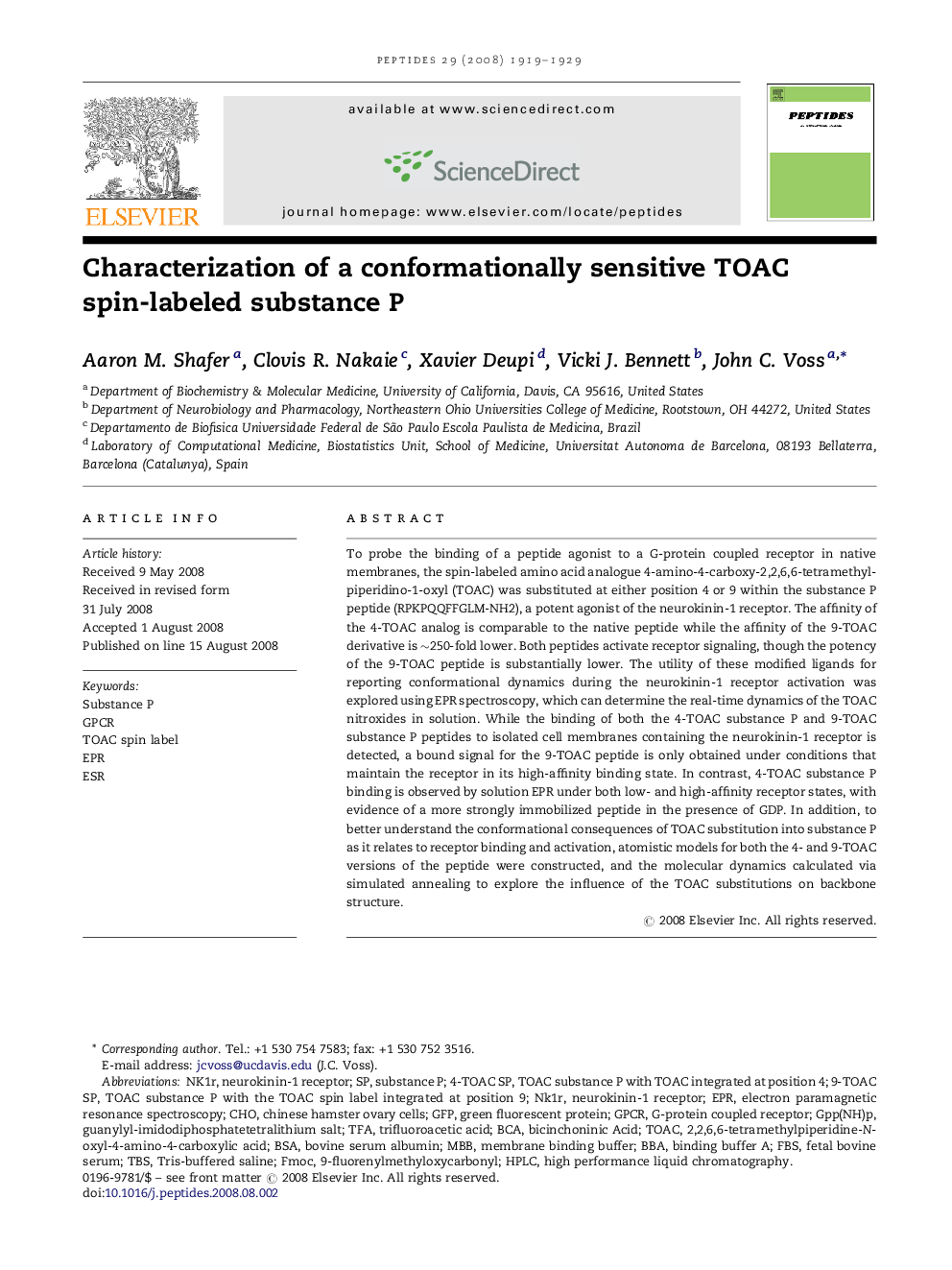| Article ID | Journal | Published Year | Pages | File Type |
|---|---|---|---|---|
| 2007478 | Peptides | 2008 | 11 Pages |
Abstract
To probe the binding of a peptide agonist to a G-protein coupled receptor in native membranes, the spin-labeled amino acid analogue 4-amino-4-carboxy-2,2,6,6-tetramethylpiperidino-1-oxyl (TOAC) was substituted at either position 4 or 9 within the substance P peptide (RPKPQQFFGLM-NH2), a potent agonist of the neurokinin-1 receptor. The affinity of the 4-TOAC analog is comparable to the native peptide while the affinity of the 9-TOAC derivative is â¼250-fold lower. Both peptides activate receptor signaling, though the potency of the 9-TOAC peptide is substantially lower. The utility of these modified ligands for reporting conformational dynamics during the neurokinin-1 receptor activation was explored using EPR spectroscopy, which can determine the real-time dynamics of the TOAC nitroxides in solution. While the binding of both the 4-TOAC substance P and 9-TOAC substance P peptides to isolated cell membranes containing the neurokinin-1 receptor is detected, a bound signal for the 9-TOAC peptide is only obtained under conditions that maintain the receptor in its high-affinity binding state. In contrast, 4-TOAC substance P binding is observed by solution EPR under both low- and high-affinity receptor states, with evidence of a more strongly immobilized peptide in the presence of GDP. In addition, to better understand the conformational consequences of TOAC substitution into substance P as it relates to receptor binding and activation, atomistic models for both the 4- and 9-TOAC versions of the peptide were constructed, and the molecular dynamics calculated via simulated annealing to explore the influence of the TOAC substitutions on backbone structure.
Keywords
ESRBCATFAGPCRNK1RTBSGFPFMOCBBA9-FluorenylmethyloxycarbonylMBBFBSTOACBSAG-protein coupled receptorGpp(NH)pbovine serum albuminTrifluoroacetic acidChobicinchoninic acidTris-buffered salineEPRfetal bovine serumChinese hamster ovary cellselectron paramagnetic resonance spectroscopySubstance Pgreen fluorescent proteinhigh performance liquid chromatographyHPLCNeurokinin-1 receptor
Related Topics
Life Sciences
Biochemistry, Genetics and Molecular Biology
Biochemistry
Authors
Aaron M. Shafer, Clovis R. Nakaie, Xavier Deupi, Vicki J. Bennett, John C. Voss,
